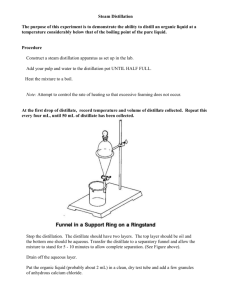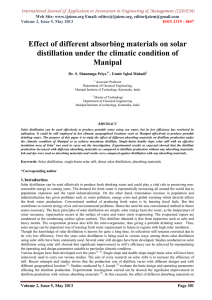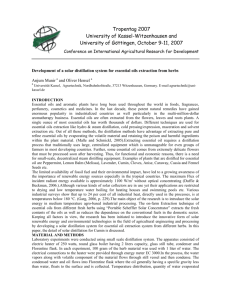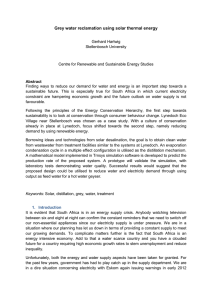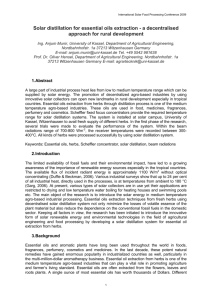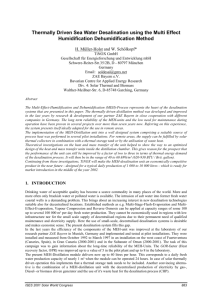Hollow-fiber membranes as wicks in solar distillation
advertisement
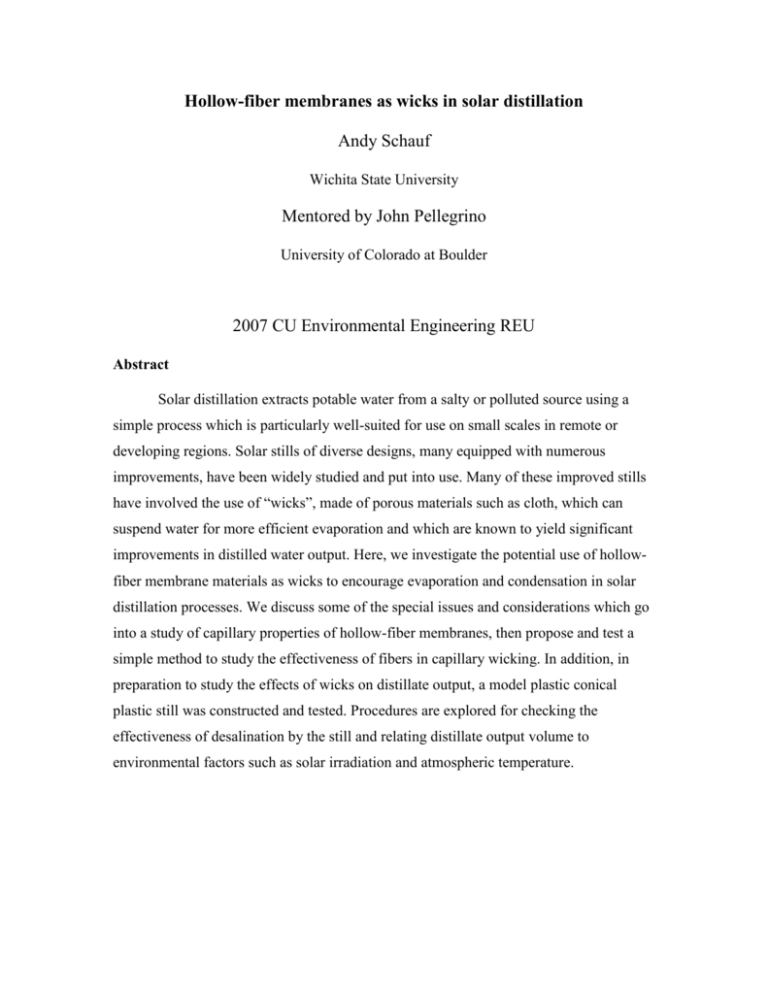
Hollow-fiber membranes as wicks in solar distillation Andy Schauf Wichita State University Mentored by John Pellegrino University of Colorado at Boulder 2007 CU Environmental Engineering REU Abstract Solar distillation extracts potable water from a salty or polluted source using a simple process which is particularly well-suited for use on small scales in remote or developing regions. Solar stills of diverse designs, many equipped with numerous improvements, have been widely studied and put into use. Many of these improved stills have involved the use of “wicks”, made of porous materials such as cloth, which can suspend water for more efficient evaporation and which are known to yield significant improvements in distilled water output. Here, we investigate the potential use of hollowfiber membrane materials as wicks to encourage evaporation and condensation in solar distillation processes. We discuss some of the special issues and considerations which go into a study of capillary properties of hollow-fiber membranes, then propose and test a simple method to study the effectiveness of fibers in capillary wicking. In addition, in preparation to study the effects of wicks on distillate output, a model plastic conical plastic still was constructed and tested. Procedures are explored for checking the effectiveness of desalination by the still and relating distillate output volume to environmental factors such as solar irradiation and atmospheric temperature.





